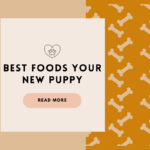Chronic skin irritation, recurrent ear infections, and relentless paw licking are not merely inconvenient quirks; they are serious health concerns. They are often the outward signs of deeper immunological imbalances triggered by poor dietary compatibility. When a dog’s body is persistently inflamed, the root cause is usually tied to what they consume on a daily basis. That’s why selecting the Best Dog Food for Allergies and Yeast Infections is crucial for long-term relief.
A thoughtfully curated diet becomes a vital tool in the therapeutic process. Beyond simply removing allergens, advanced formulations focus on restoring the gut microbiome, nourishing the skin, and regulating systemic yeast activity. Each component in the food, including protein type, carbohydrate quality, and the presence of anti-inflammatory agents, can either disrupt or restore biological equilibrium.
Modern veterinary science now converges with holistic nutrition in addressing these dual challenges. Adequate diets for sensitive dogs do not follow a one-size-fits-all model but instead emphasize precision, featuring limited-ingredient formulations, clean labels, and synergistic nutrients. This elevated approach positions food not just as sustenance but as a cornerstone of healing.
How Allergies and Yeast Infections Affect Dogs
The canine immune system, while robust, can become hypersensitive due to repeated exposure to unsuitable dietary elements. When this occurs, common proteins or grains may trigger an exaggerated immune response, resulting in persistent inflammation and a cascade of symptoms that affect the skin, ears, and digestive tract.
Yeast overgrowth, particularly caused by Malassezia, flourishes in moist, inflamed environments and exacerbates allergic responses. Its proliferation is often fueled by diets rich in starch and sugar elements that create an internal environment conducive to fungal imbalance. Dogs with recurring skin issues usually become trapped in a cycle of inflammation and infection.
The immune system’s constant engagement in fighting off allergens and yeast burdens the body’s natural defences. Over time, this leads to worsened symptoms, poor nutrient absorption, and chronic discomfort. Dogs may appear less energetic, more irritable, or experience recurring secondary infections, particularly in the ears and paws.
In advanced stages, dogs may develop thickened, pigmented skin or a greasy coat texture. Veterinary attention is essential, but diet is often the long-term solution that prevents relapses. Proper nutrition interrupts the cycle of inflammation, offering a path to recovery and resilience.
Identifying the Signs: Is Your Dog Suffering?
Subtle shifts in behaviour and appearance often precede full-blown allergy or yeast flare-ups. Discolouration of the paws, darkened skin folds, or constant ear scratching may indicate internal inflammation long before traditional symptoms, such as vomiting or diarrhoea, emerge.
Veterinary dermatologists frequently diagnose yeast infections by identifying greasy coats, thickened skin, and an unpleasant, musty odour. Meanwhile, signs of food allergies, such as chronic flatulence, watery stools, or rashes, may intensify after meals or with seasonal changes, hinting at food-environment interactions.
Proactive pet parents often note these signs but underestimate their severity. Left unaddressed, these symptoms can evolve into immune dysfunction, persistent infections, or even autoimmune complications. The early dietary correction becomes not just a remedy but a critical preventive strategy.
Ingredients That Trigger Allergies and Yeast Overgrowth
Many commercial dog foods are laced with low-cost ingredients that are biologically inappropriate for sensitive dogs. Proteins such as chicken and beef, though popular, are common allergens due to their widespread use. Grains like corn and wheat, once nutritional staples, are now linked with intolerance due to genetic modification and excessive processing.
Starches such as white rice, potatoes, and tapioca are converted into glucose, which fuels yeast overgrowth. This metabolic surge supports the unchecked expansion of Malassezia, particularly in dogs with underlying immune vulnerabilities or poor digestive enzyme production. Eliminating such starch-heavy meals is a necessary step when searching for the Best Dog Food for Allergies and Yeast Infections.
Artificial preservatives (such as BHA and BHT), dyes, and rendered meat by-products further complicate the picture. These synthetic additives contribute to oxidative stress, leaky gut syndrome, and microbial imbalance. For dogs battling chronic inflammation, avoiding these compounds is as essential as removing allergens.
What to Look for in Anti-Allergy and Anti-Yeast Dog Food
The foundation of a therapeutic canine diet lies in its ability to reduce systemic inflammation while supporting microbial balance. Single-source protein diets, particularly those based on novel meats such as rabbit, duck, or kangaroo, minimize immune confusion and reduce histamine release.
Formulas rich in omega-3 fatty acids, prebiotics, and antioxidant-rich botanicals, such as turmeric or rosemary, offer dual benefits: they soothe inflamed tissues and help rebuild the skin’s protective barrier. Additionally, the inclusion of coconut oil or MCTs creates an environment hostile to yeast overgrowth.
High-quality anti-yeast dog foods also prioritize digestibility. Whole-food ingredients, gently processed at low temperatures, maintain enzymatic integrity and enhance nutrient absorption. Look for labels that highlight fermentation products, taurine, or L-carnitine for further immune and cardiovascular support.
Vet-Recommended Dog Food Formulas
Veterinary diets are designed with clinical precision to eliminate food allergens and reduce systemic inflammation. These formulas are especially beneficial during elimination diets or in dogs with severe immune overreactions. The ingredients are chosen for their bioavailability and low antigenic potential.
Royal Canin Hydrolyzed Protein breaks down proteins into amino acids, which the immune system fails to recognize as allergens. It’s commonly used in cases of atopic dermatitis, IBD, or food intolerance. This line features a variety of dry and wet food options tailored to different sizes and health conditions.
Hill’s Prescription Diet z/d uses hydrolyzed chicken liver and a unique fibre blend to reduce gastrointestinal stress. It’s often prescribed for dogs with concurrent food sensitivities and skin conditions and is backed by strong veterinary clinical trials.
Some pet parents opt for functional, non-prescription diets, such as Farmina N&D Quinoa Skin & Coat or Purina Pro Plan Sensitive Skin & Stomach, which aren’t veterinary-exclusive but are formulated with ingredients like salmon, rice, or lamb to help reduce skin flare-ups and digestive disturbances. These formulas can serve as a long-term diet after an elimination trial. Always compare your options carefully when choosing the Best Dog Food for Allergies and Yeast Infections, especially if your dog suffers from recurrent symptoms.
In all cases, dog owners should consult their veterinarian before starting or transitioning to any prescription diet, especially when systemic yeast infections or underlying autoimmune conditions are present.
Top Dog Food Brands for Allergies and Yeast Infections
Signature continues to top the charts for its commitment to clean, allergen-free formulas. Its exotic protein offerings, such as trout, lamb, and kangaroo, cater to dogs that have developed an intolerance to chicken or beef. Each recipe is legume-rich but avoids yeast-feeding starches.
Nulo Freestyle has earned accolades for its inclusion of BC30 probiotics, a patented strain proven to survive gastric acid and reach the gut. Their “Limited+” line is ideal for dogs with food sensitivities, providing an excellent protein-to-carb ratio for weight control and yeast suppression.
The Honest Kitchen, a pioneer in human-grade dog food, has introduced new single-protein variants that exclude potatoes and rice. These dehydrated meals are especially effective for dogs with chronic yeast infections, providing hydration, digestibility, and nutrient density in one go.
Canidae PURE offers grain-free formulas with just 8 key ingredients. Their use of “HealthPLUS Solutions” includes a blend of probiotics, antioxidants, and omega oils, making it an affordable alternative for dogs needing both allergy relief and yeast management.
Instinct Limited Ingredient Diet by Nature’s Variety introduces freeze-dried raw-coated kibble, combining the benefits of raw nutrition with the convenience of kibble. Their rabbit and lamb variants are beneficial for dogs with protein sensitivity.
These brands are among the top choices when looking for the Best Dog Food for Allergies and Yeast Infections.
Natural Remedies and Supplements to Support Healing
Nature provides a formidable arsenal against yeast and allergic inflammation. Medium-chain triglycerides in coconut oil function as natural antifungals and moisturizers, restoring the skin barrier while inhibiting microbial growth.
Oregano oil, rich in carvacrol, can be used in vet-approved dilutions to combat fungal and bacterial imbalances. Similarly, apple cider vinegar used topically or diluted in meals helps regulate pH and discourage yeast colonization.
High-potency probiotics, including Lactobacillus acidophilus and Bifidobacterium animalis, replenish gut flora and outcompete yeast. Combined with enzymes like bromelain or papain, these supplements enhance protein digestion and immune moderation, accelerating skin repair.
Transitioning to a New Diet: Do’s and Don’ts
Abrupt dietary changes can trigger digestive upset, negating the benefits of a superior formula. Transitioning should begin by mixing small amounts of the new food with the existing one, gradually increasing the new blend over 10–14 days.
During this phase, dogs may exhibit temporary symptoms, such as soft stools or mild itching, as their body detoxifies. This is especially common in dogs that have been previously exposed to high-allergen or yeast-promoting diets. Owners should remain patient and document symptoms carefully.
Supportive steps such as adding bone broth, digestive enzymes, or soothing herbal teas can help smooth this transition. Ultimately, consistency and close observation will help ensure the body accepts and thrives on the improved nutritional plan.
Beyond Diet: Supporting Your Dog’s Recovery Holistically
Effective management of allergies and yeast requires a multifaceted approach. Routine bathing with medicated shampoos, such as chlorhexidine or ketoconazole, removes surface yeast and reduces inflammation, especially when paired with antimicrobial wipes or sprays.
Environmental hygiene also plays a pivotal role. Frequent washing of bedding, the use of HEPA filters, and limiting exposure to damp environments can help reduce re-infection rates and alleviate stress on the immune system.
Mental wellness contributes to physiological healing. Enrichment toys, structured routines, and positive reinforcement techniques help reduce cortisol levels, a frequently overlooked factor that can impact skin and gut health.
Frequently Asked Questions (FAQ)
Can food alone resolve yeast infections?
Nutritional intervention is foundational, but severe or systemic infections may require concurrent use of antifungal medications and medicated grooming routines for effective resolution.
Is grain-free always the right choice?
Not always. While many grains exacerbate allergies, grain-free foods often use high-sugar alternatives, such as peas or potatoes. Prioritise low-glycemic formulations regardless of the grain type.
How long does it take to notice improvements?
Improvements may be noticeable in 2–4 weeks, but full symptom resolution can take up to three months, depending on the severity and level of dietary compliance.
What if my dog refuses the new food?
Picky eating is every day in dogs with past negative food experiences. Warming the food, adding moisture, or using natural flavour enhancers, such as fish stock, can improve palatability.
Final Thoughts: A Long-Term Nutritional Approach
Allergic reactions and yeast flare-ups are not random—they are often the cumulative result of dietary misalignment and immune dysregulation. Addressing them requires an intentional, evidence-based strategy rooted in premium nutrition.
By treating food as medicine, pet owners empower themselves to offer more than relief. They provide restoration. With continued observation, informed choices, and support from qualified veterinarians, dogs can live vibrant, itch-free lives.
A well-balanced anti-allergy and anti-yeast diet is not just a short-term fix. It’s the gateway to sustained vitality, emotional well-being, and a healthier future for your four-legged companion.















One Response